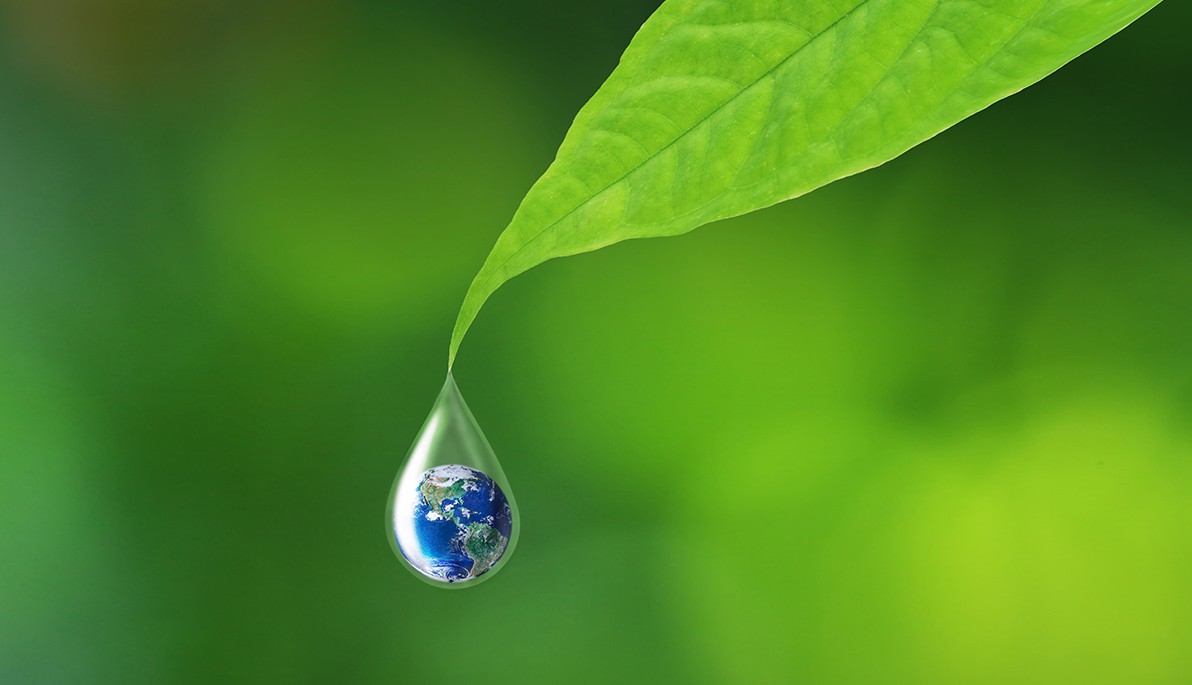News
Honoring Earth Day, Every Day
April 20, 2023
Since 1970, the United States has celebrated Earth Day on April 22. That was the year that Senator Gaylord Nelson created it, in the days before the Environmental Protection Agency was formed and legal and regulatory mechanisms were in place.
EarthDay.org, the global organizer of Earth Day, has themed this year’s observance as “Invest in Our Planet.” Recent water-cycle extremes of too little rain (or too much that can’t be absorbed and is therefore not productive) have brought water conservation to the forefront for many communities. At the same time, recent chemical spills in the United States and elsewhere have generated greater awareness about the impacts that industrial-use chemicals can have on people and the environment, in part due to their presence in groundwater.
With Earth Day 2023 approaching, what can you do that day, and every day, to protect natural resources? David Nadler, Ph.D. (B.S. ’98, M.S. ’00), a research faculty member in the College of Engineering and Computing Sciences, offers expert insight and useful information.
Before joining New York Tech in 2017, Nadler was a director within the New York City Department of Environmental Protection and holds professional certifications in sustainability and occupational health and safety. In addition to his expertise in environmental sustainability, he has conducted research on ways to safely break down PFAS, commonly known as “forever chemicals,” which have been in use for decades and are found in common products, including water-resistant fabrics and stain-resistant carpeting.
Conserving Water
What are some strategies we can use to reduce water consumption?
The best strategy to reduce water consumption in your home is to monitor your usage. Most residences that have municipal water services get invoiced regularly. If you rely on a paper statement every month or quarter, it can be difficult to monitor your consumption. Water suppliers now have apps so you can see real-time data of your usage, which can help you take greater control over water-usage habits.
Are there changes we can make inside our homes to help reduce water use?
Interior changes can help reduce water usage; they are mostly low-tech methods that have been advocated for many years. For example, high-efficiency toilets, such as those labeled as WaterSense, use less water andmay earn you a rebate from your water supplier.
Many people, especially on Long Island, use dehumidifiers in their homes to reduce moisture in the air. When the dehumidifier’s reservoir requires emptying, use it wisely, such as in gardening, rather than dumping this “free” water down the drain.
What about exterior changes?
Landscaping is a major culprit in increased water demand. Make sure that sprinklers are set up to avoid wasting water that only irrigates streets and sidewalks. Sprinklers need to run long enough so that the water reaches the root base, otherwise, it will just evaporate and provide little benefit to grass and plants. Also, water suppliers often provide rain barrels so that customers can capture stormwater runoff from gutters, which can be stored and used when needed.
“Forever Chemicals”
What are these chemicals and why are they considered contaminants?
Per-and polyfluoroalkyl substances (PFAS) are a group of chemicals used to make fluoropolymer coatings and products that resist heat, oil, stains, grease, and water. These coatings can be in a variety of products such as clothing, furniture, food packaging, and non-stick cooking surfaces, among others.
PFAS contamination can have significant impacts on communities, as these chemicals can accumulate in the environment and human bodies over time. Exposure has been linked to a number of health effects, such as cancer, developmental and reproductive problems, and immune system dysfunction.
Why are these chemicals that have added convenience to our lives for years suddenly harmful?
PFAS are getting a lot of attention right now, but they are just a few of many chemicals in our environment that can cause health issues. Their true impact will need more research to determine how it “sizes up” to the risks posed by other, and possibly more prevalent, chemicals.
In the meantime, and as research is conducted, is there anything individuals can do?
Consumer Reports and other advocacy groups offer information about everyday products that contain PFAS, like some fast-food wrappers and microwave popcorn bags. Cosmetics that are water-resistant can also contain these chemicals, often denoted by the ingredients “PTFE” or “fluoro-” on the packaging. It is always a good idea to be an informed consumer, but again, the true impact of these chemicals needs a great deal more research. Of course, consumers, through their shopping and voting behavior, for example, can encourage manufacturers, corporations, and even elected officials to prioritize this type of research for the benefit of humans and the planet.
This interview has been edited and condensed.





